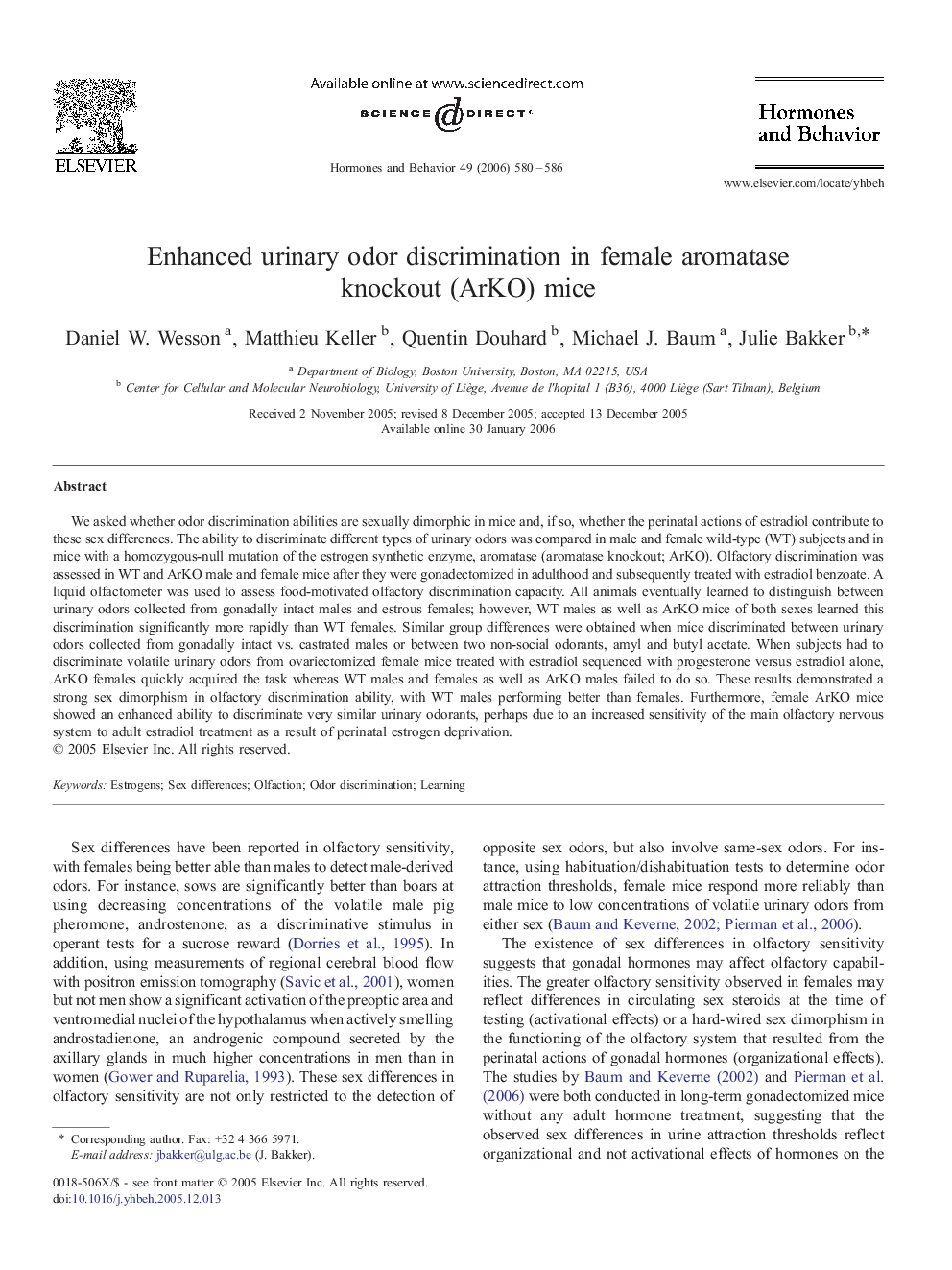| Article ID | Journal | Published Year | Pages | File Type |
|---|---|---|---|---|
| 323004 | Hormones and Behavior | 2006 | 7 Pages |
We asked whether odor discrimination abilities are sexually dimorphic in mice and, if so, whether the perinatal actions of estradiol contribute to these sex differences. The ability to discriminate different types of urinary odors was compared in male and female wild-type (WT) subjects and in mice with a homozygous-null mutation of the estrogen synthetic enzyme, aromatase (aromatase knockout; ArKO). Olfactory discrimination was assessed in WT and ArKO male and female mice after they were gonadectomized in adulthood and subsequently treated with estradiol benzoate. A liquid olfactometer was used to assess food-motivated olfactory discrimination capacity. All animals eventually learned to distinguish between urinary odors collected from gonadally intact males and estrous females; however, WT males as well as ArKO mice of both sexes learned this discrimination significantly more rapidly than WT females. Similar group differences were obtained when mice discriminated between urinary odors collected from gonadally intact vs. castrated males or between two non-social odorants, amyl and butyl acetate. When subjects had to discriminate volatile urinary odors from ovariectomized female mice treated with estradiol sequenced with progesterone versus estradiol alone, ArKO females quickly acquired the task whereas WT males and females as well as ArKO males failed to do so. These results demonstrated a strong sex dimorphism in olfactory discrimination ability, with WT males performing better than females. Furthermore, female ArKO mice showed an enhanced ability to discriminate very similar urinary odorants, perhaps due to an increased sensitivity of the main olfactory nervous system to adult estradiol treatment as a result of perinatal estrogen deprivation.
